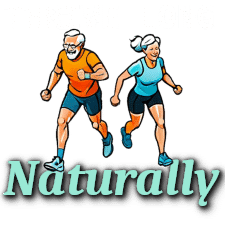Unlock Restful Nights: The Best Exercises for Improving Sleep Quality
Tossing and turning, counting sheep until the sun peeks through the blinds – does this sound familiar? Millions struggle with sleep, but what if the key to unlocking a peaceful night wasn't in a pill bottle, but in a pair of running shoes or a yoga mat? While it might seem counterintuitive to expend energy to improve rest, the right kind of exercise can be a powerful, natural sleep aid. Let’s dive into the world of movement and discover the best exercises for improving sleep quality, transforming your nights from restless to restorative.
Why Exercise Helps You Sleep Better
Before we jump into specific exercises, let's understand why physical activity can be so beneficial for sleep. It's not just about tiring yourself out. Exercise impacts several key areas that contribute to better sleep:
- Regulates Circadian Rhythm: Exercise helps synchronize your body's natural sleep-wake cycle, making it easier to fall asleep and wake up at consistent times. Think of it as resetting your internal clock each day.
- Reduces Stress and Anxiety: Physical activity is a well-known stress reliever. It helps lower cortisol levels (the stress hormone) and releases endorphins, which have mood-boosting effects. Less stress and anxiety translate to a calmer mind at bedtime.
- Increases Body Temperature: Exercise raises your core body temperature. As your body cools down afterward, it signals to your brain that it's time to sleep. This cooling process can promote deeper and more restful sleep.
- Alleviates Symptoms of Insomnia: Studies have shown that regular exercise can significantly reduce the severity of insomnia symptoms, such as difficulty falling asleep, staying asleep, and daytime fatigue.
The Best Types of Exercise for Sleep
Not all exercise is created equal when it comes to promoting sleep. While any physical activity is generally beneficial, certain types are particularly effective:
Aerobic Exercise: Get Your Heart Pumping
Aerobic exercises, like running, swimming, cycling, and dancing, are fantastic for improving sleep. These activities elevate your heart rate and breathing, providing a cardiovascular workout that benefits both your physical and mental health. Aim for at least 30 minutes of moderate-intensity aerobic exercise most days of the week.
Examples:
- Brisk Walking: A simple and accessible option for most people.
- Running: A more intense workout that can significantly improve sleep quality.
- Swimming: Low-impact and gentle on the joints, making it ideal for those with arthritis or other joint pain.
- Cycling: Another excellent low-impact exercise that can be done indoors or outdoors.
- Dancing: A fun and engaging way to get your heart rate up and improve your mood.
Strength Training: Build Muscle, Improve Sleep
Strength training, also known as resistance training, involves using weights or your own body weight to build muscle mass. While it might not seem directly related to sleep, strength training can improve sleep quality by reducing stress, improving body composition, and increasing overall physical function. Aim for two to three strength training sessions per week, focusing on different muscle groups.
Examples:
- Weightlifting: Using free weights or weight machines to build strength.
- Bodyweight Exercises: Exercises like push-ups, squats, lunges, and planks.
- Resistance Bands: A versatile and portable option for strength training.
Yoga and Stretching: Mind-Body Connection
Yoga and stretching are excellent for promoting relaxation and reducing muscle tension, both of which can contribute to better sleep. These practices focus on mindful movement and breathing, calming the nervous system and preparing the body for rest. Certain styles of yoga, like restorative yoga and yoga nidra, are particularly beneficial for sleep.
Examples:
- Restorative Yoga: Involves holding poses for extended periods with the support of props like blankets and pillows to promote deep relaxation.
- Yoga Nidra: A guided meditation practice that induces a state of deep relaxation, similar to sleep.
- Gentle Stretching: Stretching major muscle groups can release tension and improve flexibility.

Creating a Sleep-Enhancing Exercise Routine
Ready to incorporate exercise into your routine to improve your sleep? Here’s how to create a plan that works for you:
1. Timing is Key: Avoid Intense Workouts Close to Bedtime
While exercise is generally beneficial for sleep, exercising too close to bedtime can have the opposite effect. The increase in body temperature and adrenaline that comes with intense workouts can make it harder to fall asleep. Aim to finish your workouts at least 2-3 hours before you go to bed. Gentle activities like yoga or stretching can be done closer to bedtime.
2. Start Slowly and Gradually Increase Intensity
If you're new to exercise, start slowly and gradually increase the intensity and duration of your workouts over time. Pushing yourself too hard too soon can lead to injuries and discourage you from continuing. Listen to your body and take rest days when needed.
3. Consistency Matters: Make Exercise a Habit
The key to reaping the sleep-related benefits of exercise is consistency. Aim to exercise most days of the week, even if it's just for a short period of time. Find activities that you enjoy and that fit into your lifestyle to make it easier to stick with your routine.
4. Create a Relaxing Bedtime Routine
Combine exercise with other sleep-promoting habits to create a relaxing bedtime routine. This could include taking a warm bath, reading a book, listening to calming music, or practicing meditation. A consistent bedtime routine helps signal to your body that it's time to sleep.
5. Listen to Your Body and Adjust Accordingly
Everyone's body is different, so what works for one person might not work for another. Pay attention to how your body responds to different types of exercise and adjust your routine accordingly. If you find that a particular activity is interfering with your sleep, try a different one or adjust the timing of your workouts.
Exercises to Avoid Before Bed
While most exercises are good, some should be avoided close to bedtime. These are typically high-intensity activities that can stimulate your nervous system and make it difficult to wind down:
- High-Intensity Interval Training (HIIT): Short bursts of intense activity followed by brief recovery periods.
- Sprinting: Short, maximum-effort runs.
- Heavy Weightlifting: Lifting heavy weights can be stimulating and increase adrenaline levels.
- Competitive Sports: The adrenaline and excitement of competitive sports can make it difficult to relax.
Other Lifestyle Factors That Impact Sleep
Exercise is just one piece of the puzzle when it comes to improving sleep quality. Other lifestyle factors that can impact sleep include:
- Diet: Avoid caffeine and alcohol before bed. Eat a balanced diet and avoid large meals close to bedtime.
- Sleep Environment: Create a dark, quiet, and cool sleep environment.
- Stress Management: Practice stress-reducing techniques like meditation or deep breathing.
- Screen Time: Avoid screens (phones, tablets, computers) for at least an hour before bed.
- Consistent Sleep Schedule: Go to bed and wake up at the same time each day, even on weekends.
When to Seek Professional Help
If you've tried various strategies to improve your sleep and are still struggling, it's important to seek professional help. A doctor or sleep specialist can help identify any underlying medical conditions that may be contributing to your sleep problems and recommend appropriate treatment options. Don't hesitate to reach out for help if you're experiencing chronic sleep difficulties.
Sweet Dreams are Made of This
Improving your sleep quality through exercise is a powerful and natural way to enhance your overall well-being. By incorporating the right types of physical activity into your daily routine, you can regulate your circadian rhythm, reduce stress, and promote deeper, more restful sleep. Remember to listen to your body, be consistent, and combine exercise with other healthy sleep habits for optimal results. So, lace up those shoes, roll out that yoga mat, and get ready to unlock the door to a world of sweet dreams.

